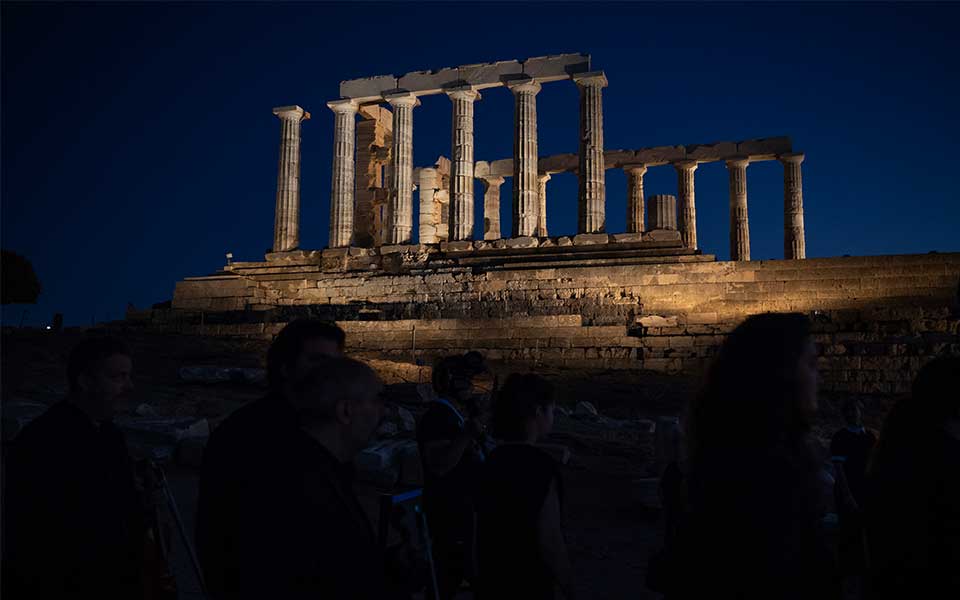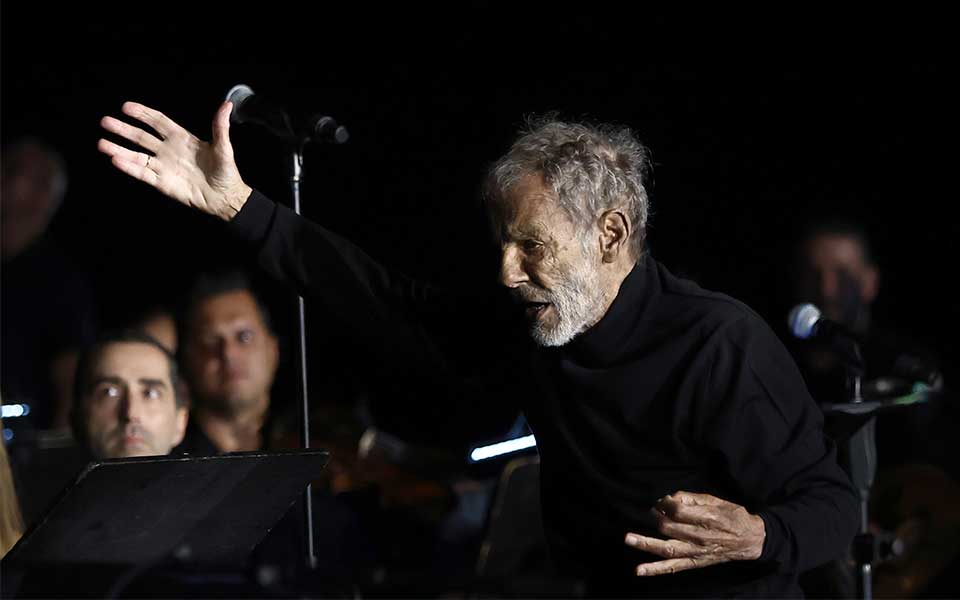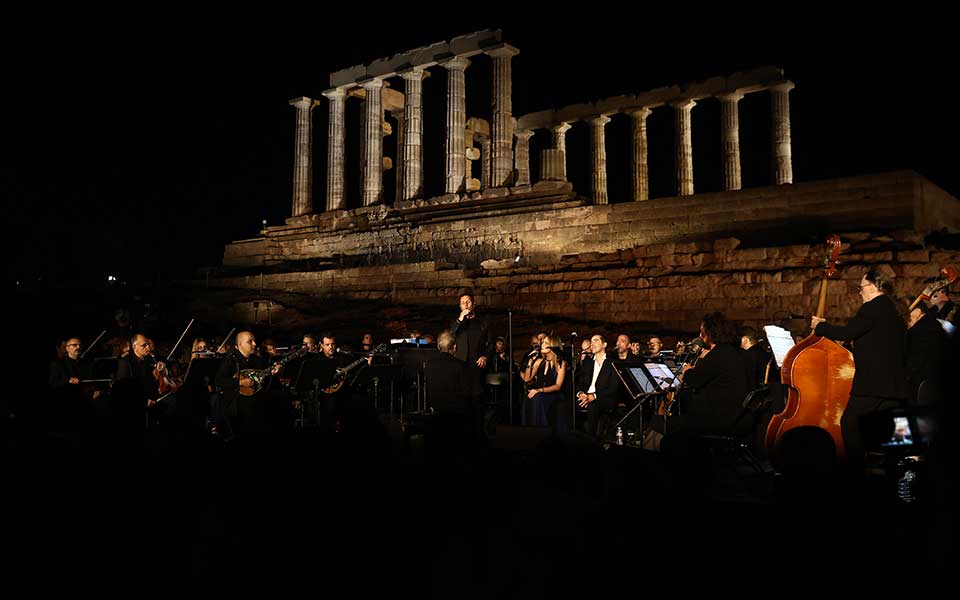By Nikolas Zois
When internationally acclaimed lighting designer Eleftheria Deko undertook the task of re-illuminating the Temple of Poseidon at Sounion, one of Greece’s most captivating archaeological sites, she faced several challenges. A large portion of the temple—such as the northern side of the columns—has not survived, meaning that if someone views it from a certain angle for the first time, they might not immediately grasp its entire volume. The site offers multiple viewpoints, from both land and sea, some of which previously made the temple appear “dim” at night. Additionally, the local Agrileza marble, from which it was built (around 444–440 BC), lacks the “photogenic” quality of the Pentelic marble used for the Parthenon.
“We had to find a golden balance so that the monument would not appear two-dimensional from certain points nor cause glare from others,” the designer tells us. “The structure’s volume, geometry, and relief needed to be fully visible.”

© Intime News
The major technical and artistic challenge was met, and the new nighttime appearance of the Temple of Poseidon was unveiled, with stunning images circulating worldwide. 38 new LED lighting fixtures were installed, both north and south of the temple, along the perimeter of the sanctuary and the inner side of the wall that defines it. Although there are more lights than the 12 fixtures installed ahead of the Athens 2004 Olympic Games (which suffered wear over time), the new lights reduce light pollution and energy consumption. Particularly noteworthy is the way the “temperature” of the light was utilized.
“For the exterior side of the columns, we used a cooler shade of white and a warmer one for the interior, while a more neutral tone was applied to the temple’s base. This differentiation helps highlight the volume and relief better,” explains Eleftheria Deko. The same principle applies to distant views, such as from drivers who see the illuminated temple at night. “We studied the effect from various points,” notes the designer. “The goal was for people to recognize the temple, not just see a smudge in the dark.”

© Intime News
The new lighting of the Temple of Poseidon was inaugurated by Prime Minister Kyriakos Mitsotakis in the presence of Culture Minister Lina Mendoni, Evangelos Mytilineos, president of Metlen Energy & Metals (which funded the study and implementation of the project), and distinguished international guests. The event concluded with a concert by renowned Greek composer Stavros Xarchakos. During the ceremony, speakers also praised the award-winning work of Eleftheria Deko and her team, particularly their lighting design for the Acropolis. But how did the two projects differ?
“The Parthenon lighting uses two fixtures per column,” Ms. Deko explains, “whereas at the Temple of Poseidon, we installed one fixture for every three columns, following a ‘less is more’ philosophy. The morphology of the Acropolis rock is very different from that of Sounion. We also had to ensure that the spotlights did not disrupt the landscape or inconvenience morning visitors.”

© Angelos Tzortzinis, Pool via AP
The first phase of the project focused on illuminating the Sanctuary of Poseidon and its immediate surroundings, while the second phase will address the remains of the ancient settlement and the walls on the northern and eastern sides. Eleftheria Deko and her team have also designed the lighting for Acrocorinth, the Temple of Hephaestus, the Philopappos Monument, and the Hippodamian Gate, among other sites. “Monuments fascinate me in their current form,” says Deko, “like people who have aged but still retain their character, dignity, and inner glow. In a way, when I design their lighting, I feel illuminated by them as I delve deeply into the details of their incomparable history.”
Is there a common approach to her work on these projects? “Our philosophy is not to repeat ourselves, to avoid doing something just because we know we did it well in the past. Instead, we start from scratch,” concludes Eleftheria Deko. “The Temple of Poseidon may share some common references with the Parthenon, but the landscape is completely different. We let the place itself, the monument, the architecture, speak to us to tell us what it needs to shine. We follow our fundamental principles, but much like the seven notes of a piano, which can compose an infinite number of songs, we strive to discover what is best for each situation.”
This article was previously published in Greek at kathimerini.gr











